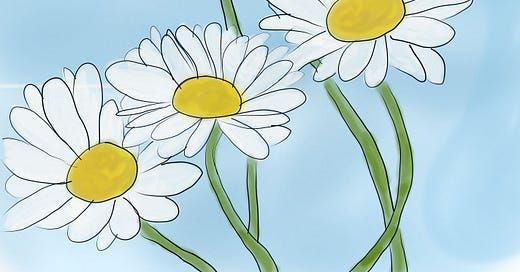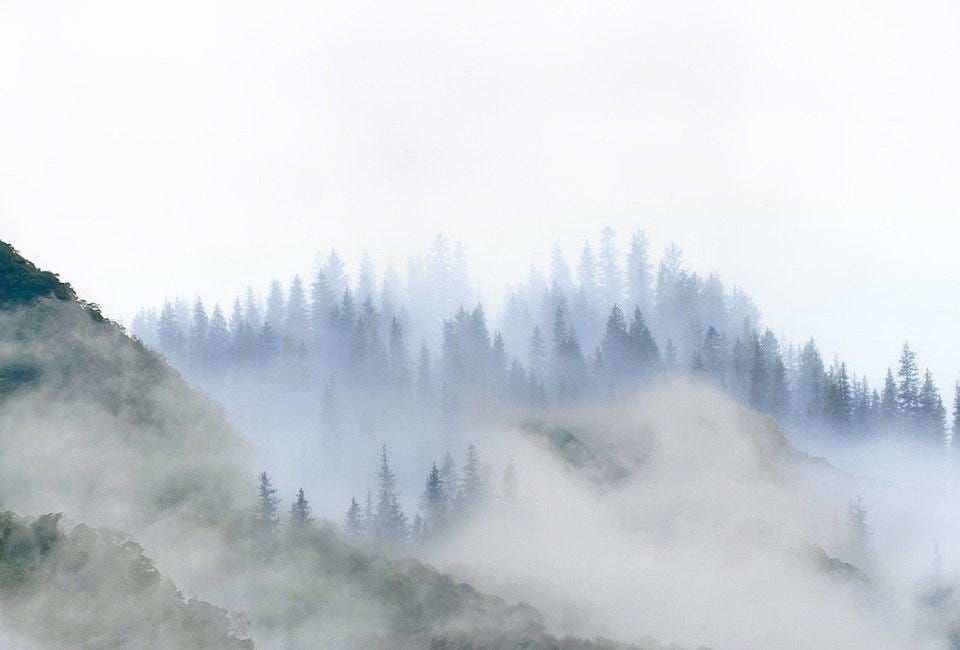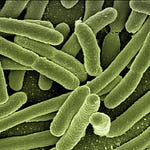Part 1: Tiptoe Through the Tulips (and the Liverworts)
And if a man prevail against one, two shall withstand him: a threefold cord is not easily broken.
-Ecclesiastes 4:12, Douay-Rheims
Hop on board your bird to continue the Grand Tour (I think I’ll go with a peregrine falcon)! Today, we will be visiting the Kingdom of Plants. The smell of millions of flowers fill the air, as you fly among the trees and ferns, the grasses and bushes. The kingdom is full of green, green, and some more green, with flowers exploding in a burst of color here and there.
Why are all these plants so green? I mean, the trees have some brown bark and sometimes grass or leaves turn yellow and red, but that just emphasizes the point that all of the creatures here are mostly green. You can thank chlorophyll for that: tiny structures inside plant cells that let the plants make their own food through photosynthesis. Nearly all creatures that are green (and are not animals) have chlorophyll, including those bacteria and protists that can make their own food.
As you explore the kingdom you will see all the flowers, trees, grass, and bushes from your backyard, four-leaf clovers, and towering redwood trees from California. You will also see the prickly cacti and aloes native to the desert and the towering pines and spruce of the mountains; those are plants, too, even though they don’t have the usual leaves. If you look closely, you will see even more bizarre plants, like moss (that fuzzy green stuff that grows close to the ground or on the sides of trees and rocks), willowy seaweed and its cousin the green algae, and those fantastically funny-looking creatures known as liverworts (short little guys whose leaves really do look like flat livers).
One thing that is you might notice about most of these creatures is that most plants, whether a poppy or a poplar, have a similar shape. Imagine a daisy (as I often like to do) – can you picture it’s sunny face standing tall on a slender green stem? The stem, along with any branches, holds up the plant and provides a path for water and food to travel from leaves to roots and back again. Along the stem of the daisy, you will find the leaves, the food factory of the plant where most of the photosynthesis takes place.
If you were to pull up the daisy (you wouldn’t do that to my daisy, would you?), we would find the roots, like a tangle of spaghetti in black dirt sauce. The roots keep the plant, well, rooted; without them, the plant would wash away or blow over in the wind, but with them it can stand proudly. The roots are also how the plant drinks, getting water and vital minerals from the soil to keep our lovely daisy healthy and sunny.
When temperatures start to warm after the snowy winter, you will see a small ball start to form on the end of the new daisy stems – the bud. Once that bud opens to the glorious sunshine and soft wind and rain, you will see the pretty white and yellow flower, that bright, fragrant feature which attracts bees, butterflies, or other animals. The flower invites all of these visitors so that it can grow the next generation, which is in the form of seeds like tasty walnuts and hazelnuts, spiky gum balls and pine cones, and sticky burrs. Even corn, peas, and wheat are seeds that we eat. The Kingdom of Plants might be quiet and serene, but it is still full of growth and life.
Ready for More?
For Older Students:
Chapter 5B: The Kingdoms of the Plants
Part 2: Growing Tall and Staying Small - A Map of the KingdomPraised be my Lord for our sister, mother earth, The which sustains and keeps us And brings forth diverse fruits with grass and flowers bright.
For Younger Students:
Chapter 6: The Kingdom of Animals - Invertebrates
Welcome to the first installment in the Kingdoms of Creation home education science program. We’re glad you’re here. Each chapter is split into two parts: Part 1 is for younger students (usually K-4); Parts 1 and 2 together are for older students (usually 5-8). The Kingdoms of Creation is a comprehensive biology program. See the full table of contents
Need Something Else?
Visit the Welcome Page
Welcome to the Kingdoms of Creation
A long time ago in land not so far away, the Creator made a world. This world was big and beautiful, wild and wonderful, fantastic and frightening. It was full of amazing creatures like the ping-pong tree sponge (an immobile creature that looks just like its name sounds but eats shrimp in the deep dark of the sea) and the dragon mantis (a large brown …
Or Check Out the Original Post
Chapter 5: The Kingdom of Plants
Welcome to the first installment in the Kingdoms of Creation home education science program. We’re glad you’re here. Each chapter is split into two parts: Part 1 is for younger students (usually K-4); Parts 1 and 2 together are for older students (usually 5-8). The Kingdoms of Creation is a comprehensive biology program. See the full table of contents

















Share this post